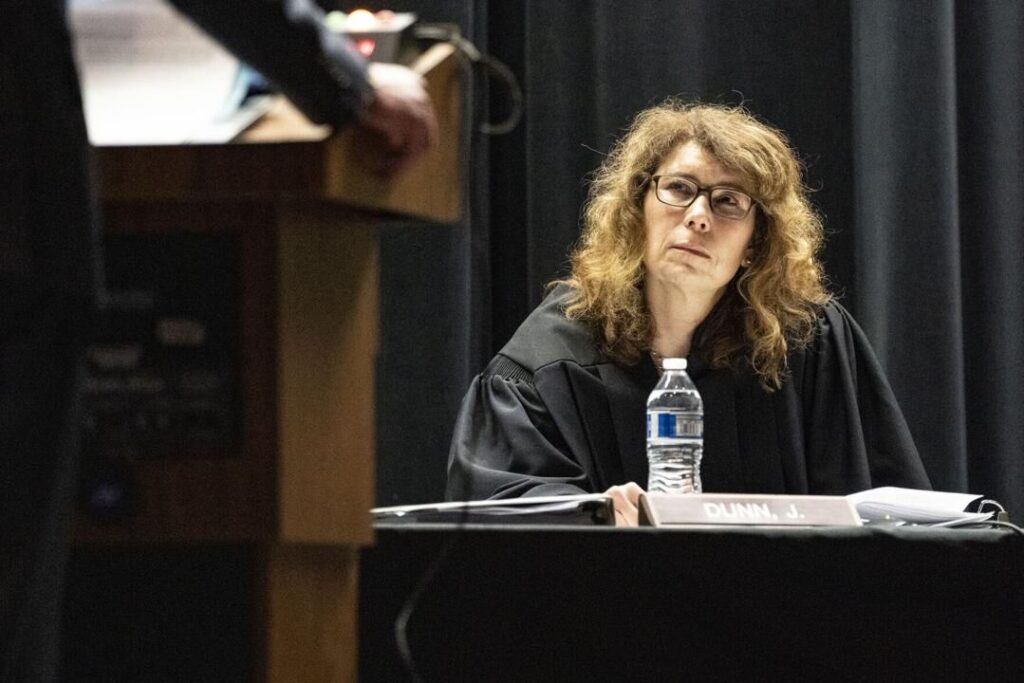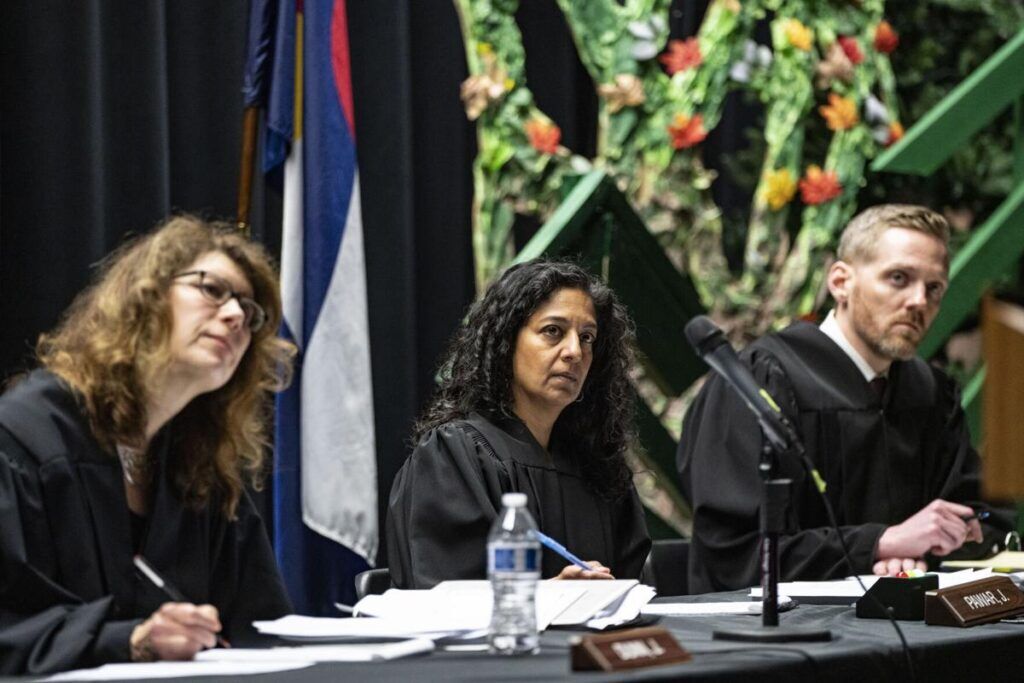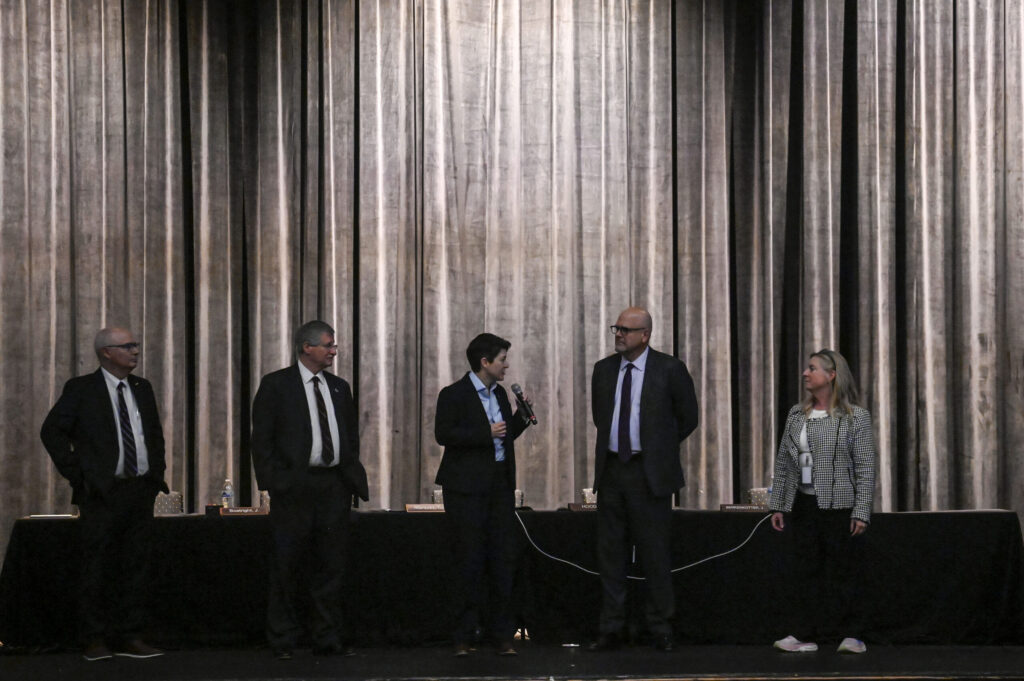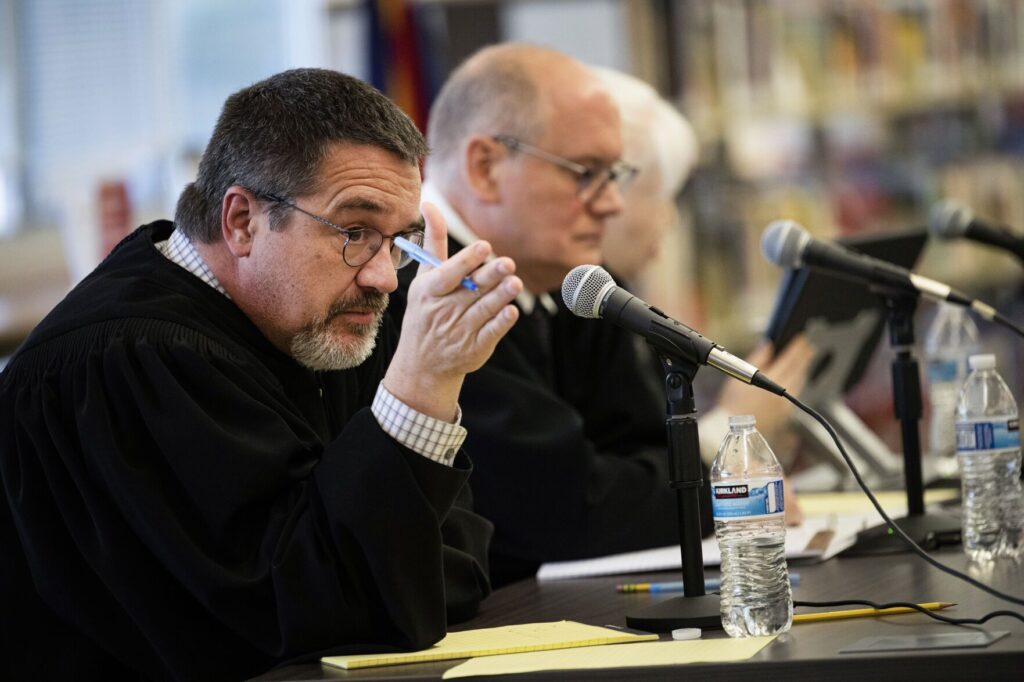‘Pick your battles’: Federal judge walks lawyers through do’s and don’ts of jury instructions
Jury instructions should be relevant, accurate, brief and understandable.
Those were the key points emphasized by U.S. District Court Senior Judge Christine M. Arguello on Friday during a presentation to lawyers at the federal courthouse in downtown Denver. She said the “straw that broke the camel’s back” and prompted her to speak publicly about the subject was a recent employment dispute with experienced lawyers on each side.
“They know the law. But at one point, my law clerks said, ‘They stipulated to this instruction, but it’s a misstatement of the law,'” said Arguello. “And I’m like, how could you have stipulated to something, when you’re this experienced, that misstated the law?”
Arguello, who was appointed to Colorado’s federal trial court in 2008 and transitioned to part-time status in 2022, noted jury instructions are the “law of the case” and the framework for a trial. Yet, lawyers generally delegate the job of drafting them to a junior attorney who may not know the case that well.
“And that comes out very apparent when it gets to us,” she added.
To that end, she recommended lawyers refer to prior jury instructions she has approved in similar cases as well as template jury instructions offered by the U.S. Court of Appeals for the 10th Circuit. Attorneys can also look at 10th Circuit opinions to understand what the law requires for various types of claims, but Arguello warned against copying the exact legal language.
“Keep in mind, the 10th Circuit does not write for jurors,” she said. “We’re required to read the instructions verbatim to the jury. In some cases, that can take an hour or more. It’s page after page after page of instructions. So, you need to write them in a way that is understandable to the average layperson.”

U.S. District Court Judge Christine M. Arguello
Occasionally, erroneous jury instructions can be the basis for a successful appeal. In recent months, Colorado’s state appellate court overturned a defendant’s murder conviction because of an improper instruction and reversed a woman’s child abuse convictions due to the omission of crucial language. The Court of Appeals also ordered a new trial in a personal injury case because the evidence did not support one instruction the trial judge gave to jurors.
E. Peter Selimos, one of Arguello’s law clerks, explained there are two types of instructions: procedural instructions — such as those explaining the burden of proof — and substantive ones that outline what the jury needs to determine on a civil claim or criminal offense.
Proposing an instruction that deviates from established sources “requires a reason other than trying to put your client in the most advantageous position,” he said. “Judges will see through that tactic. So, pick your battles. The proposed variation, if you have any, must either be to state the law more clearly or to minimize confusion to the jury.”
Jury trials at Colorado’s federal court are relatively rare. Last year, there were only 33 civil and nine felony cases tried to a jury.
“If you have experience as federal practitioner in federal jury trials, you’re pretty unique anymore. Because it’s not that common,” Chief U.S. Magistrate Judge Michael E. Hegarty told lawyers last month during his annual presentation about the court’s workload.

The Alfred A. Arraj U.S. Courthouse in downtown Denver. (Photo courtesy of United States District Court – Colorado)
Arguello noted that she joined five of the newest district judges in establishing uniform courtroom protocols recently, although the judges parted ways when it came to trials. As one example, Arguello described her relatively new practice of asking lawyers to give opening statements prior to conducting jury selection.
“I did it first in a criminal case, believe it or not, during COVID. It was a drug case involving death, and it was a good thing I did that,” she said. “I had some jurors who said, ‘I cannot serve because I had a son or a daughter or a cousin who had died.’ It was so much more impactful. The lawyers got to study the jury as they were giving the opening statement and it was so much more impactful than me giving a two-paragraph summary.”
Among the other tips Arguello and her clerks offered were to create a single instruction with all necessary definitions, consolidate information about each claim as much as possible and ensure the lead trial attorney is responsible for most of the drafting. Arguello also recommended referring to the parties by their names — rather than “plaintiff” or “defendant” — because that is how jurors are identifying the parties.
“We obviously have a big hand in making sure the jury instructions are accurate and are presented to the jury at the appropriate time and place,” said law clerk Deanna Tamborelli. “But really, writing out the jury instructions should be the lawyers’ responsibility.”










